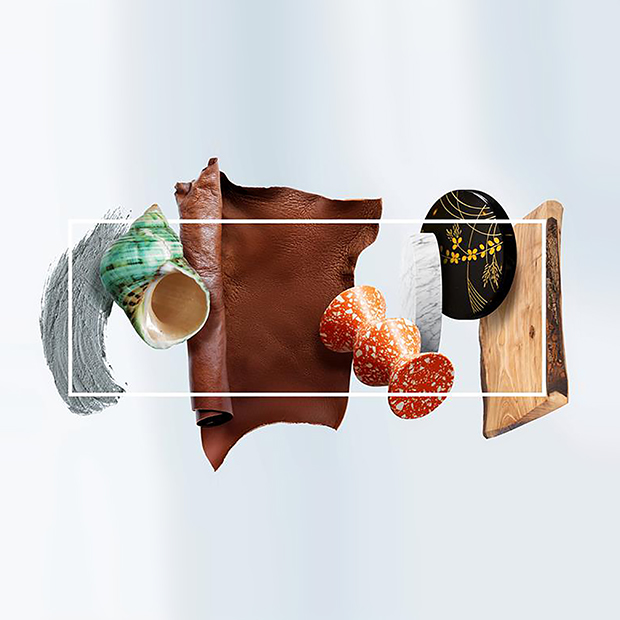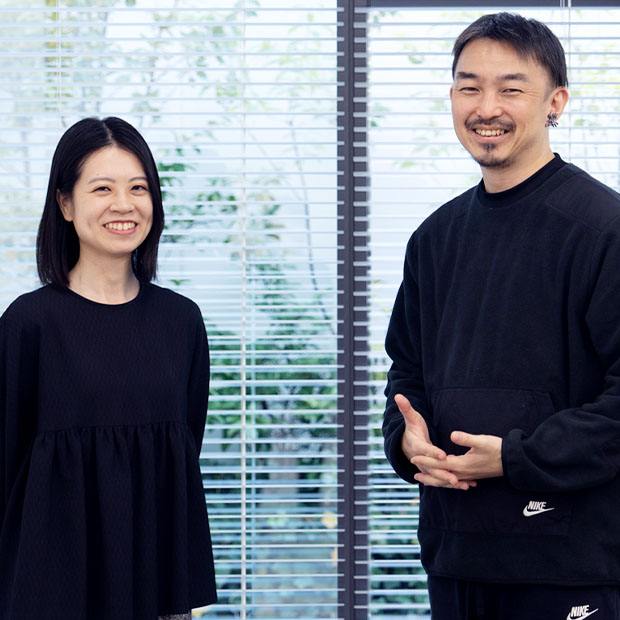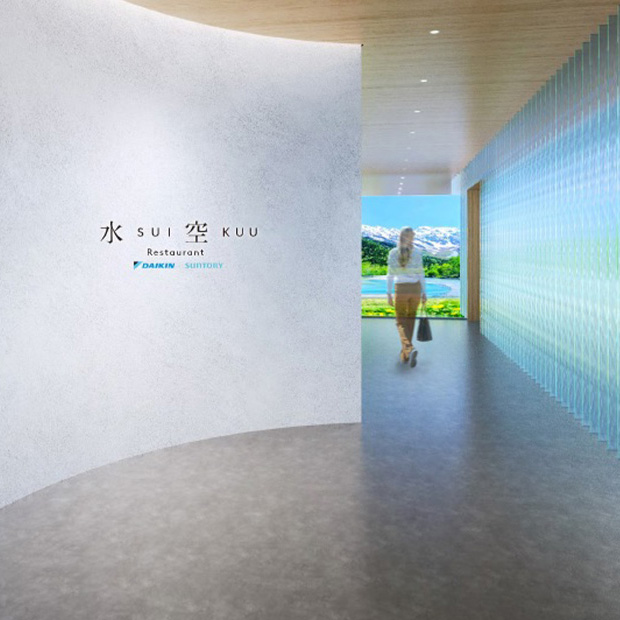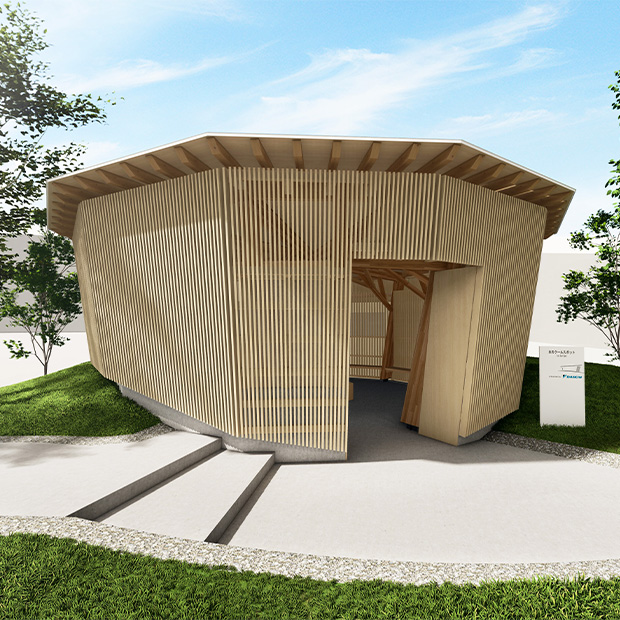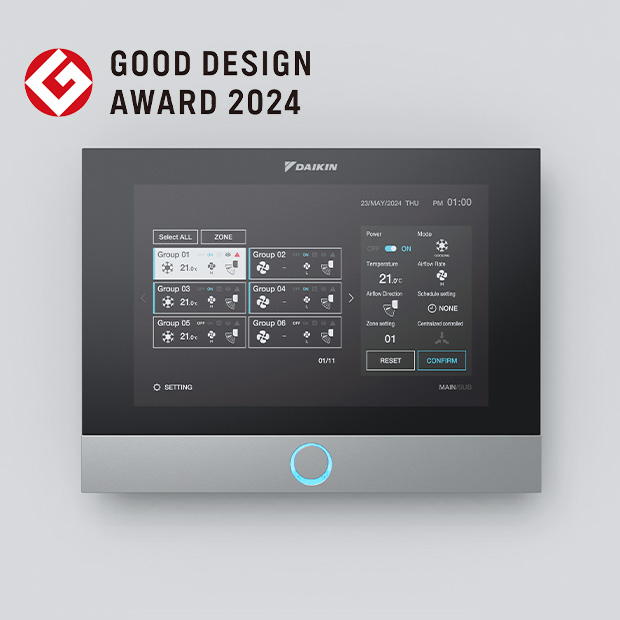In an era of increased uncertainty, establishing groundbreaking innovation has become increasingly more difficult. From this perspective, the concept of “foresight,” an exploratory method for creating new value in the unforeseeable future, has been gaining attention. Daikin Industries has also implemented a project incorporating foresight to conceive of business themes that forecast several years into the future. Daikin designer Sayumi Hama, who planned the project, and Goodpatch's Hideyuki Endo, who assisted in it as a partner consultant, discuss the program centered around workshops.
Exploratory Method “Foresight” Creates New, Undeveloped Value
Endo:
With the release of “Design-Driven Management Declaration” in 2018 by the Ministry of Economy, Trade and Industry (METI) and the Japan Patent Office (JPO) and the trend toward digital transformation (DX), Japan has also seen a growing movement toward utilizing design methods and thinking in business.
Since our founding, we at Goodpatch have been leveraging our strength in UI/UX design in support of various companies as a design partner, but we have also received numerous inquiries for consultation from companies facing challenges in creating innovation.
While it has been a long time since calling this the “VUCA* era,” there is mounting uncertainty on a global scale, not only in the business environment, but also in terms of world affairs and climate change. This is why I believe that companies find it increasingly more difficult to create new, groundbreaking value and to pioneer innovation.
*VUCA is an acronym of the words "Volatility," "Uncertainty," "Complexity," and "Ambiguity," and refers to a state in which things are highly uncertain and it is difficult to predict the future.
Hama:
Within these changes in society, “foresight” is a method that has been gaining attention. This method gathers the indications of future changes in society and life and is used to formulate hypotheses. Many companies use it to create new value that does not currently exist in the world. With this in mind, we believe that it is necessary for the designers themselves to take the initiative in collecting and analyzing information on social trends, management information, technological information, and other related issues and to formulate hypotheses. This project was launched as a means to try out this method.
We asked Goodpatch for its help in explaining the importance of creating future value, mastering the correct thought process, and improving the output quality.
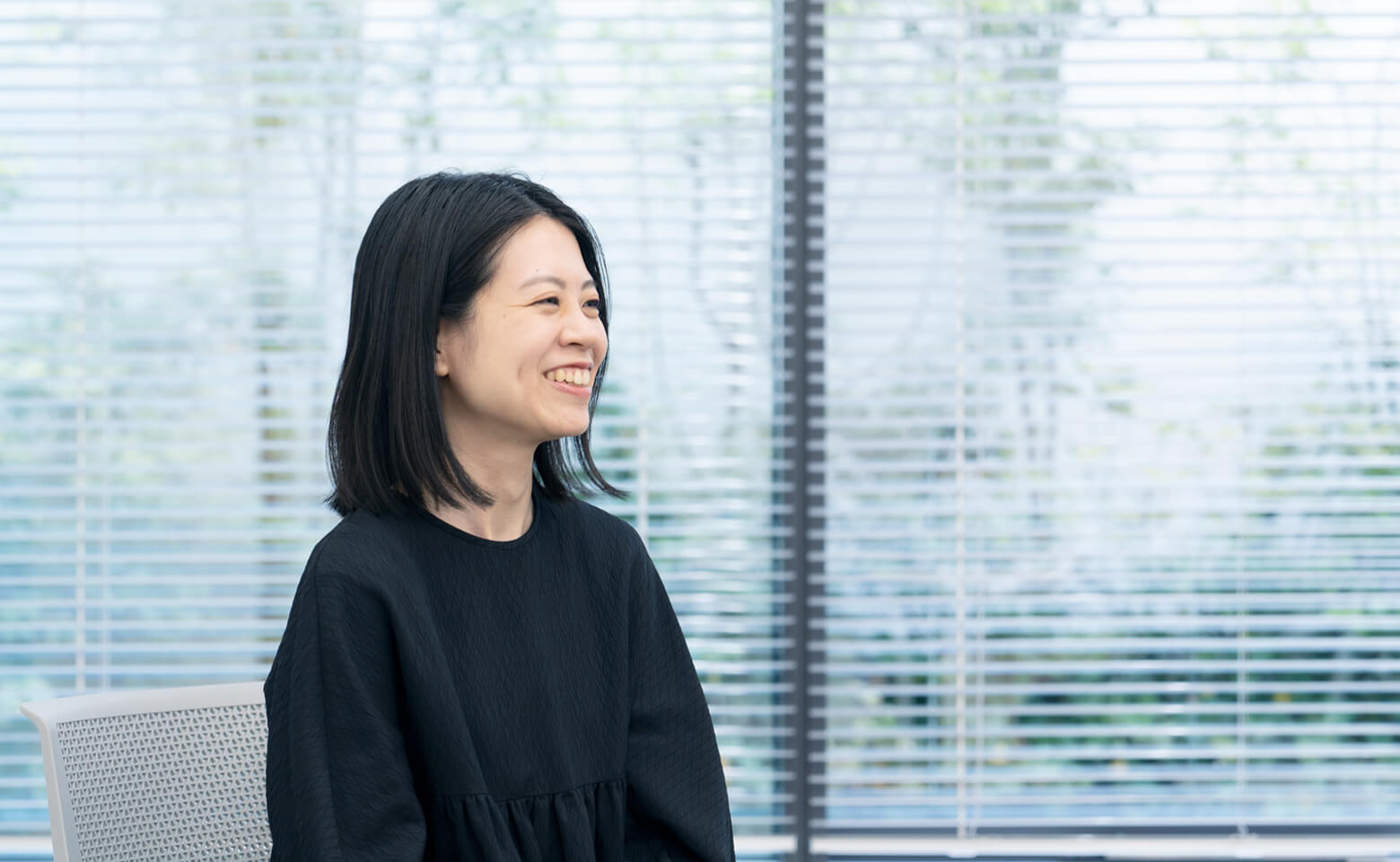
Endo:
Thank you for that introduction. This project used the foresight method to plan business themes for the near future by pulling together a wide variety of events that could provide a glimpse of the future and then arranged them from the perspective of Daikin's business. While following an orthodox foresight method, different approaches were adopted for the first and second halves of the project. In the first half, participants took an introspective approach to imagining the future, focusing on ideas from their own perspectives and experiences and drawing on the indications of the future that they themselves had gathered. Because no right answers exist in the designs of the future, it is important to start not only from plausible future scenarios but also from preferred ones. Conversely, in the second half, we wanted to make a more persuasive proposal for the future business themes that had been set as their goals, so we took the approach of having them reinterpret Daikin strengths in a workshop format and then re-examine the possible outcomes if their imagined future scenarios for society were realized.
With this understanding and the basic elements of a business model, project participants could contemplate a future vision, even one that stretched the imagination, as something that might apply to them personally, prompting them to think, “This is certainly a possibility for Daikin in the future.”
Because it is impossible to accurately predict the future when the subject of the design is part of the future timeline itself, none of us can say with any certainty that the ideas and business models that emerge from this project will be correct. However, in support of business design, our company may be unique in that we place importance on customer experience by reflecting upon society and the people who live there, imagining the role of companies in that world, and thinking carefully from a global perspective rather than looking for easy answers.
The Foresight Project for DAIKIN Design Gets in Full Swing
Hama:
The goals of this project were twofold: the first was for everyone at DAIKIN Design to experience the foresight process, and the second was to consider new ideas from a designer's perspective.
Endo:
When I heard about the themes, I strongly identified with Daikin's stance of wanting to tackle the project with an approach and ideas unique to their design department. The way that designers think about their products and services in the process of creating them allows the designers to offer unique proposals that embrace a future where there are no right answers.
So, first of all, emphasis was placed on the premise of making the process unique to the design department. The “predictions” work involved interpreting macro trends and understanding them structurally, while the “indications” work involved formulating hypotheses from a social perspective that fully utilized individual curiosity. These activities were conducted in parallel based on individual work while also looking to incorporate the value of dialogue in the workshop. Although members usually work together for a specific objective, mainly product design, their expectations and anxieties about the future and how they perceive indications in society vary according to their own personal values. For the group work, we selected participants likely to have different perspectives and designed it to be an experience in which the perspectives of other people could stimulate participants and help them deepen their own ideas.
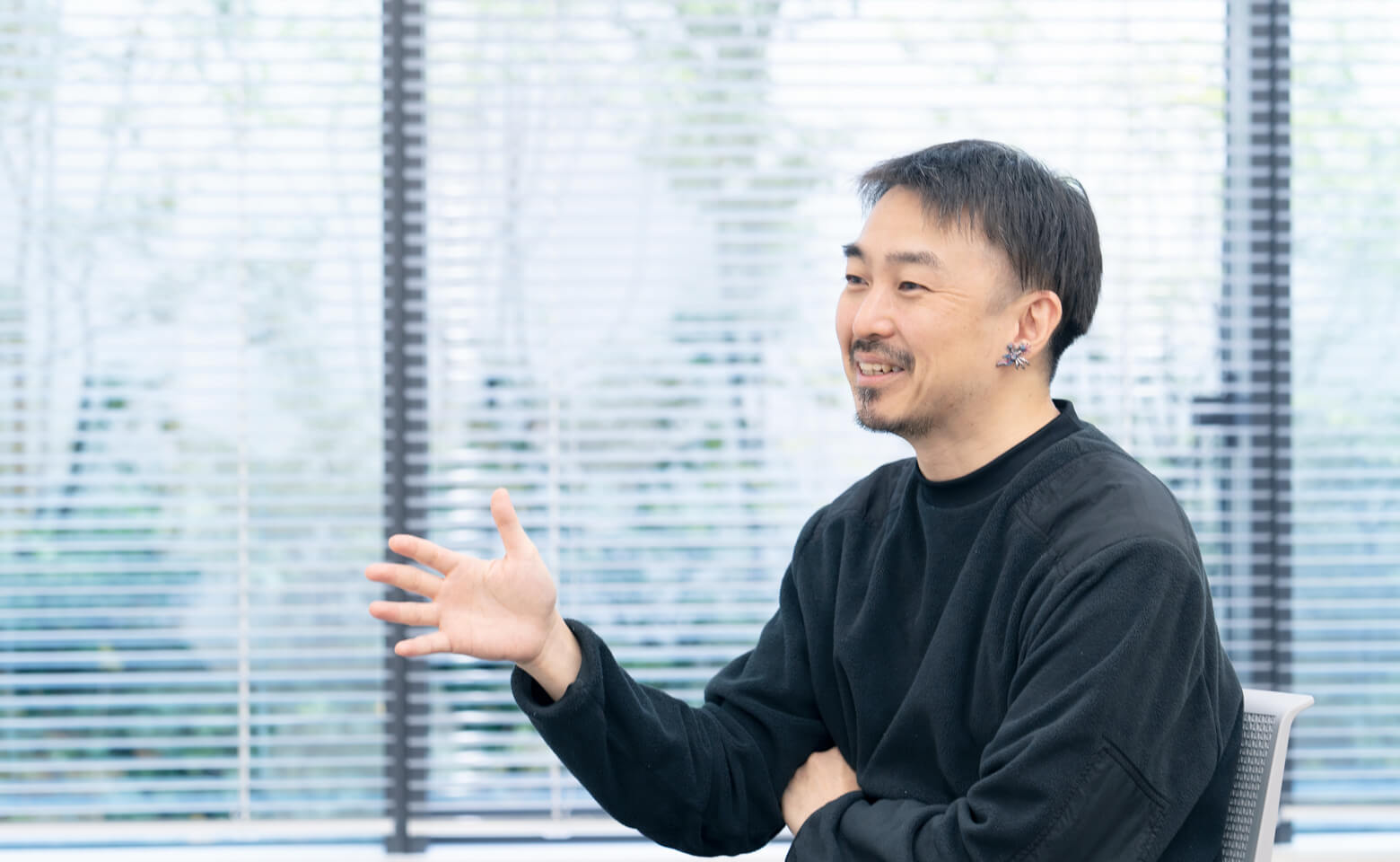
Another aspect that we focused on was creating a sense of acceptance. I’ll repeat it again: future-based designs do not necessarily lead to the right answer. I imagine that there were times when the participants were confused and wondering, “What are we doing?” That's why we carefully, and repeatedly, explained the meaning of each process and the connections between steps. At the same time, we also focused on creating an atmosphere that respected and accepted out-of-the-box ideas and thinking.
Moreover, building a sense of acceptance for those outside the project was also a key point. Obviously, the proposal of futuristic business themes, which was the aim for project output, needs to be accepted by those in other business divisions who have not been exposed to the same level of exploration and dialogue in the project. The stronger the internal narrative of the project, the greater the awareness gap for those outside the project, and this could become a barrier to evaluation and acceptance. In this project, we incorporated interviews with experts having a wealth of experience and knowledge. While there is no correct answer and it is impossible to predict accurately, the accounts of experts who have researched and explored these subjects every day with an eye on future possibilities, or who are proactively working on implementing technologies and services, were used as inspiration for the project, and this was intended to make the ideas for uncertain future scenarios more persuasive.
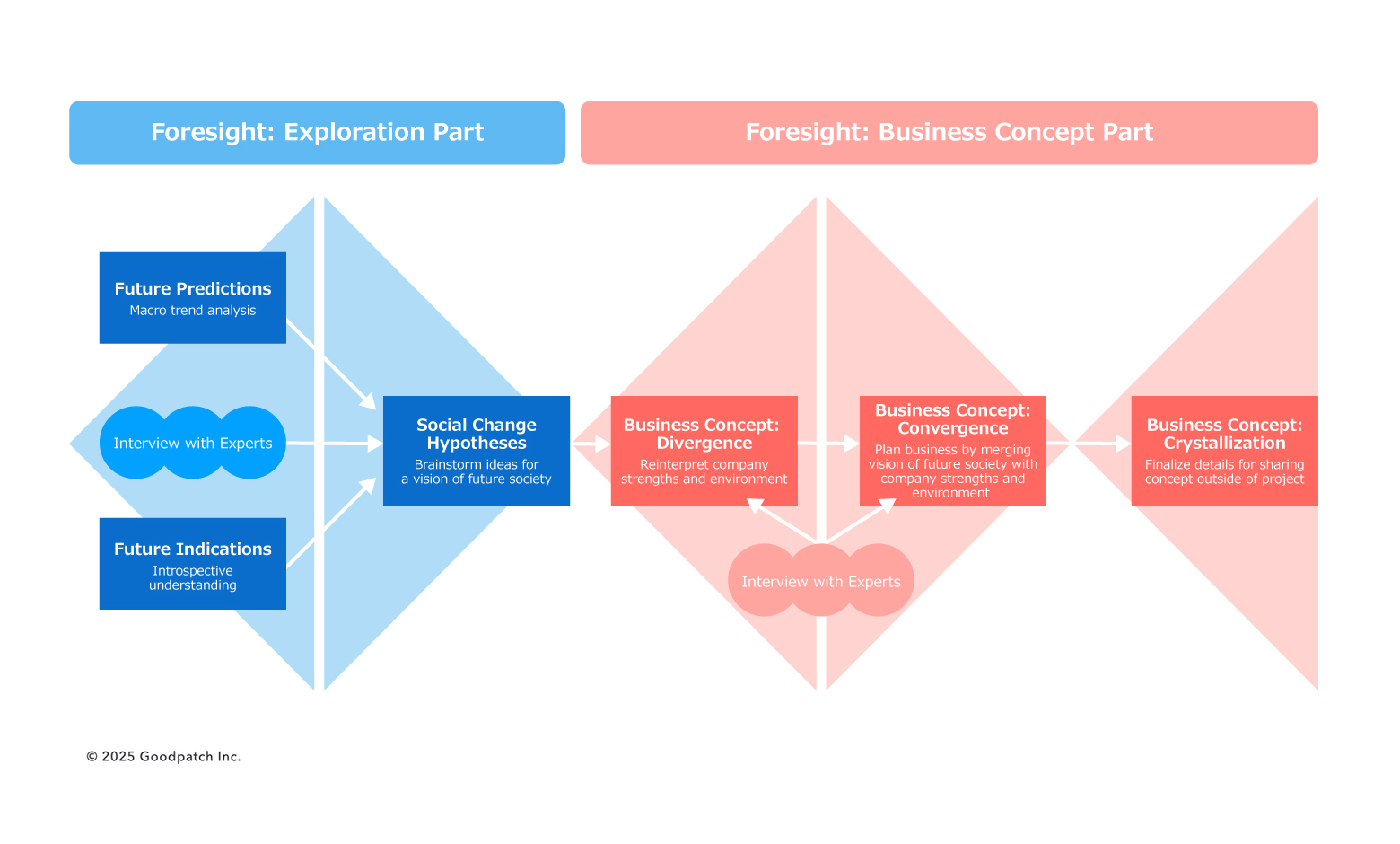
Real World Experience Gained from Interviews with Experts
Hama:
For the actual interviews, I participated under the guidance of Goodpatch members, led by Endo. The interviews with the experts in the first half of the project were focused on obtaining information to serve as a stimulus for generating ideas, and in the second half, they were focused on presenting the experts with the ideas that we had considered. When asked about unfamiliar fields in which I had no personal experience in, it was extremely valuable to hear directly from the experts with actual experience in that environment. Their accounts were persuasive, and it was impressive to learn about real-world situations and how they might differ from what we imagine them to be. Endo also gave me some tips on how to develop a conversation to increase mutual enthusiasm and draw out authentic feelings.
Endo:
Not only did the experts have their own personal experience, but I feel like they had greatly reflected on that experience. They recognized how their experiences and knowledge were connected to events and could provide a perspective on what to be beware of and how to interpret things. In this way, they offered a perspective on the future, so it was more valuable than hearing a simple account of information.
Naturally, the views and experience of experts are not absolute. What’s great about the DAIKIN Design team is that, rather than using an idea just as it was presented, they say, "This is what the person said, but there may be other possibilities.” When it came to coming up with the final themes for future business, they incorporated these ideas as a common context for the team while also remembering to make them their own. I could sense the unique approach of a designer, interpreting various information and materials and then giving them form.
Hama:
While we were inspired by these expert interviews and created hypotheses and ideas based on the information that we had gathered, it was important for us to be able to diverge freely from them. In our daily work, we can sometimes limit our ideas by imagining what the output should be or by simply carrying on with what had been done in the past. However, this time, the Goodpatch members acted as a catalyst to get the DAIKIN Design members to think, which I believe led to a better output.
Future of the DAIKIN Design through the Foresight Project
Hama:
The Foresight Project enabled all group members to experience the importance of designers themselves creating ideas that are linked to management.
Our vision at Daikin Industries is to make a worldwide contribution to the realization of a sustainable society by creating new value for “Air” and the “Environment,” and the mission of DAIKIN Design is to maximize the user experience (UX) by utilizing design thinking with an open mind and spirit. Until now, DAIKIN Design has proposed a variety of UX ideas, but we hope to incorporate the futuristic perspective that we gained from this project to propose even better products and services to our users.
Endo:
The positive and enjoyable attitude that everyone exhibited towards the project was extremely helpful. One of the foundations for this type of endeavor lies in the willingness of the participants. The first important step is getting people to think, “I'm not sure how it will turn out, but I'll give it a try.”
Goodpatch Inc.: https://goodpatch.com/








